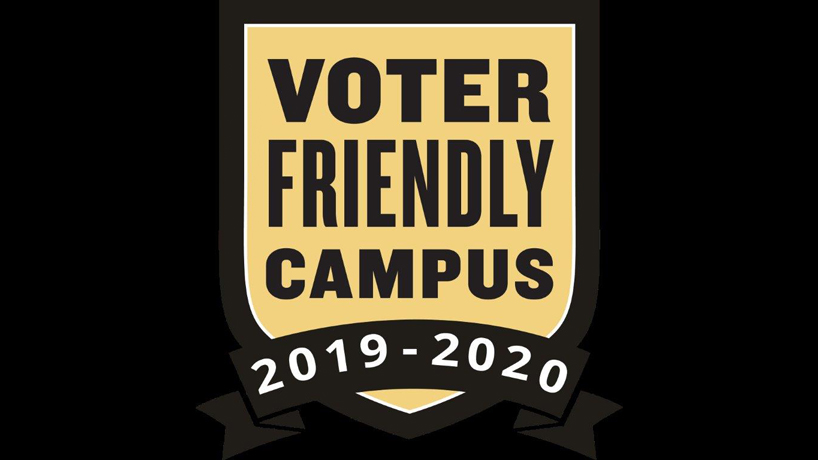
UMSL was designated a Voter Friendly Campus for the second time in recognition of the university’s effort to foster civic engagement among its students.
The University of Missouri–St. Louis has once again been designated a “Voter Friendly Campus.” The initiative, led by national nonpartisan organizations Campus Vote Project and NASPA – Student Affairs Administrators in Higher Education, holds participating institutions accountable for planning and implementing practices that encourage their students to register and vote in the 2018 elections and in the coming years.
UMSL first received the designation in 2017 as one of 83 institutions in 23 states. This year, it’s grown to include 123 campuses in 31 states.
“We are thrilled to once again receive the designation as a Voter Friendly Campus,” said Patricia Zahn, director of community outreach and engagement and the Des Lee Collaborative Vision, who spearheaded UMSL’s participation in the initiative. “We know that our students have a history of civic engagement with high voting rates and active participation in the community. Applying for the Voter Friendly Campus designation not only gave us the chance to raise the visibility of our accomplishments, but it helped us be more strategic in coordinating our voter education and voter registration efforts and challenged us to reach students who may not already be engaged.”
As part of its effort to be designated a Voter Friendly Campus, UMSL offered a wide range of voter engagement activities in the lead-up to last fall’s midterm elections, including a forum on statewide ballot initiatives on Oct. 3, a watch party for the U.S. Senate debate between Claire McCaskill and Josh Hawley on Oct. 18 and a Ballot Bingo event on Oct. 23. Numerous other events facilitated conversations on civic issues such as immigration, racial equity, redrawing legislative districts and lobbying and limiting campaign contributions. Those related activities provided opportunities to engage more faculty members in this work.
The university also expanded on its already strong efforts to make voter registration easily accessible to students with opportunities available for the first time at move-in days, undergraduate orientation for the College of Arts and Sciences and Graduate School orientation at the beginning of the semester.
UMSL has made a strong statement about the civic mission of higher education to prepare students to be engaged participants in our democracy and is excited to continue engaging students through 2019, 2020 and beyond.
“As stated in the university’s Civic Action Plan, our vision is that UMSL students, faculty and staff are informed, empowered and active participants in creating a more robust, equitable and livable community,” Zahn said.
The mission of the Voter Friendly Campus designation is to bolster efforts that help students overcome barriers to participating in the political process. Campuses are evaluated based on the campus plan to engage student voters in 2018, how it facilitated democratic engagement efforts on campus and a final analysis of those efforts. The designation is valid through December 2020.
“Institutionalizing voter engagement, registration and turnout efforts on college campuses is no easy feat for institutions of higher learning, especially in today’s political climate wherein many communities are polarized,” NASPA President Kevin Kruger said. “With the second iteration of the Voter Friendly Campus program, we’ve learned that campuses that have been most successful in fostering a campus climate inclusive of democratic participation do so by intentionally including multiple facets of the institutions’ community in fostering the skills, knowledge and dispositions supporting students’ civic agency.”
The institutions designated as voter friendly represent a wide range of two-year, four-year, public, private, rural, and urban campuses.














